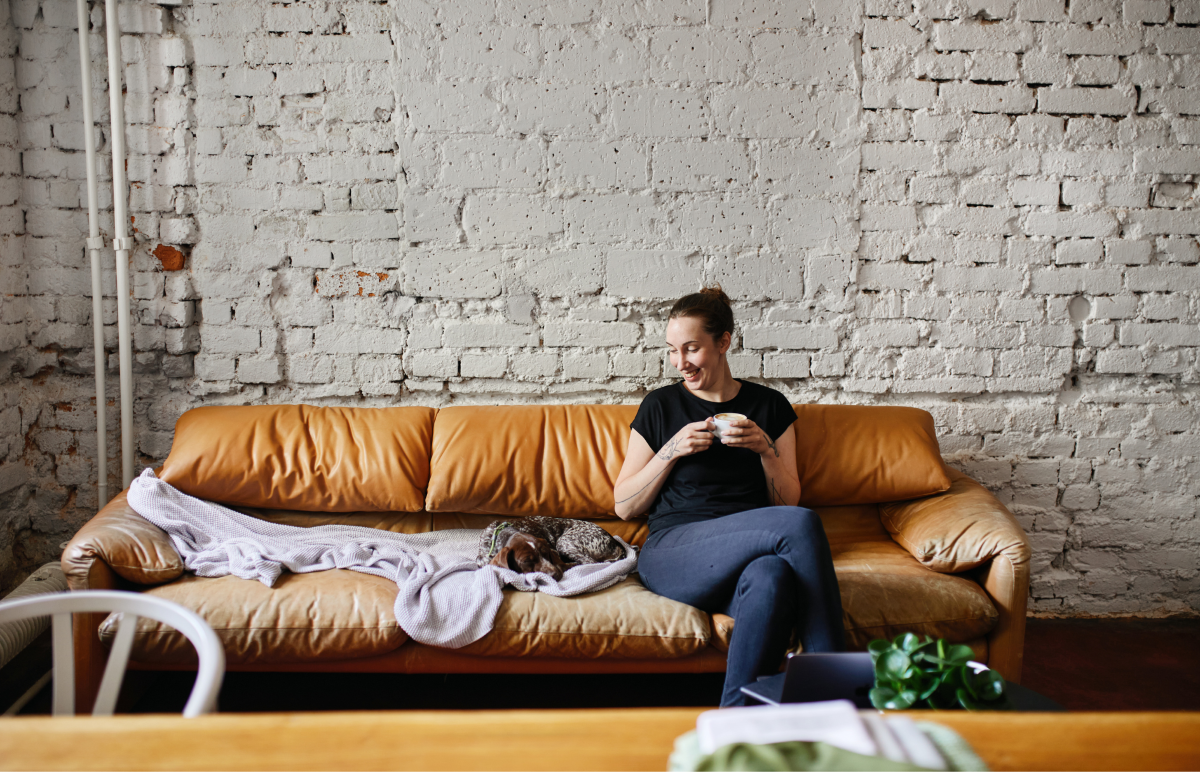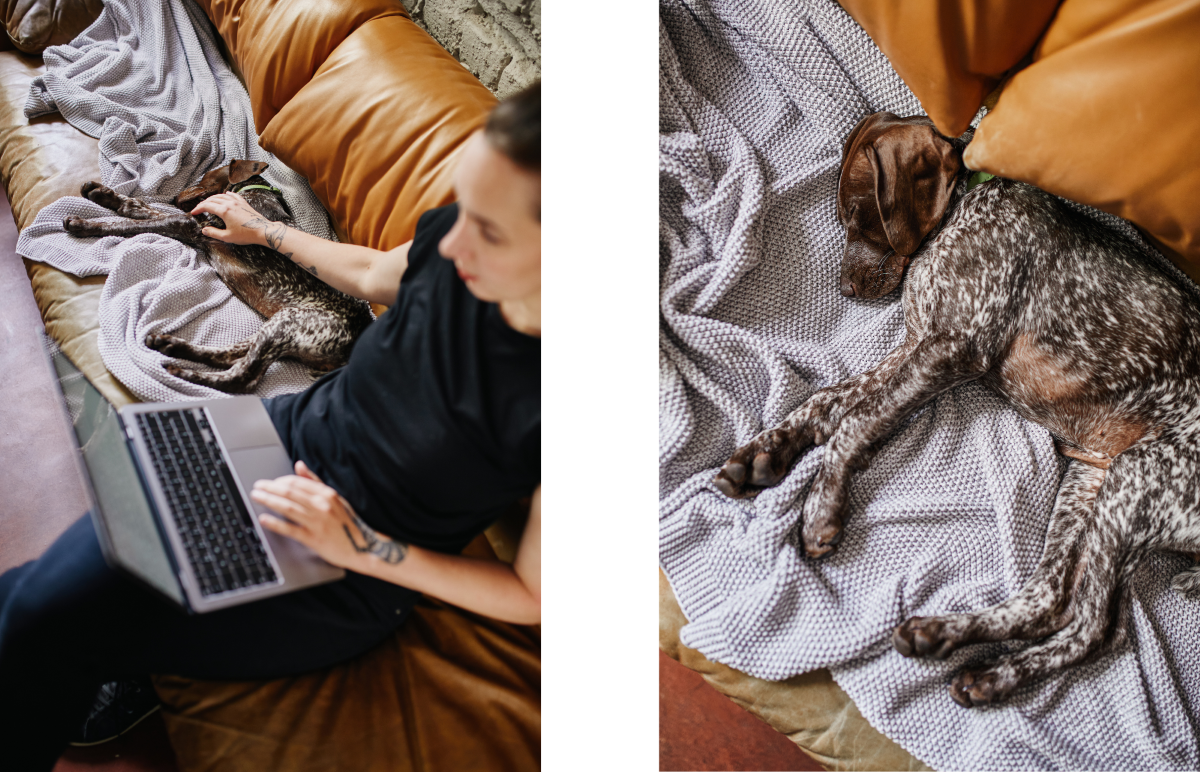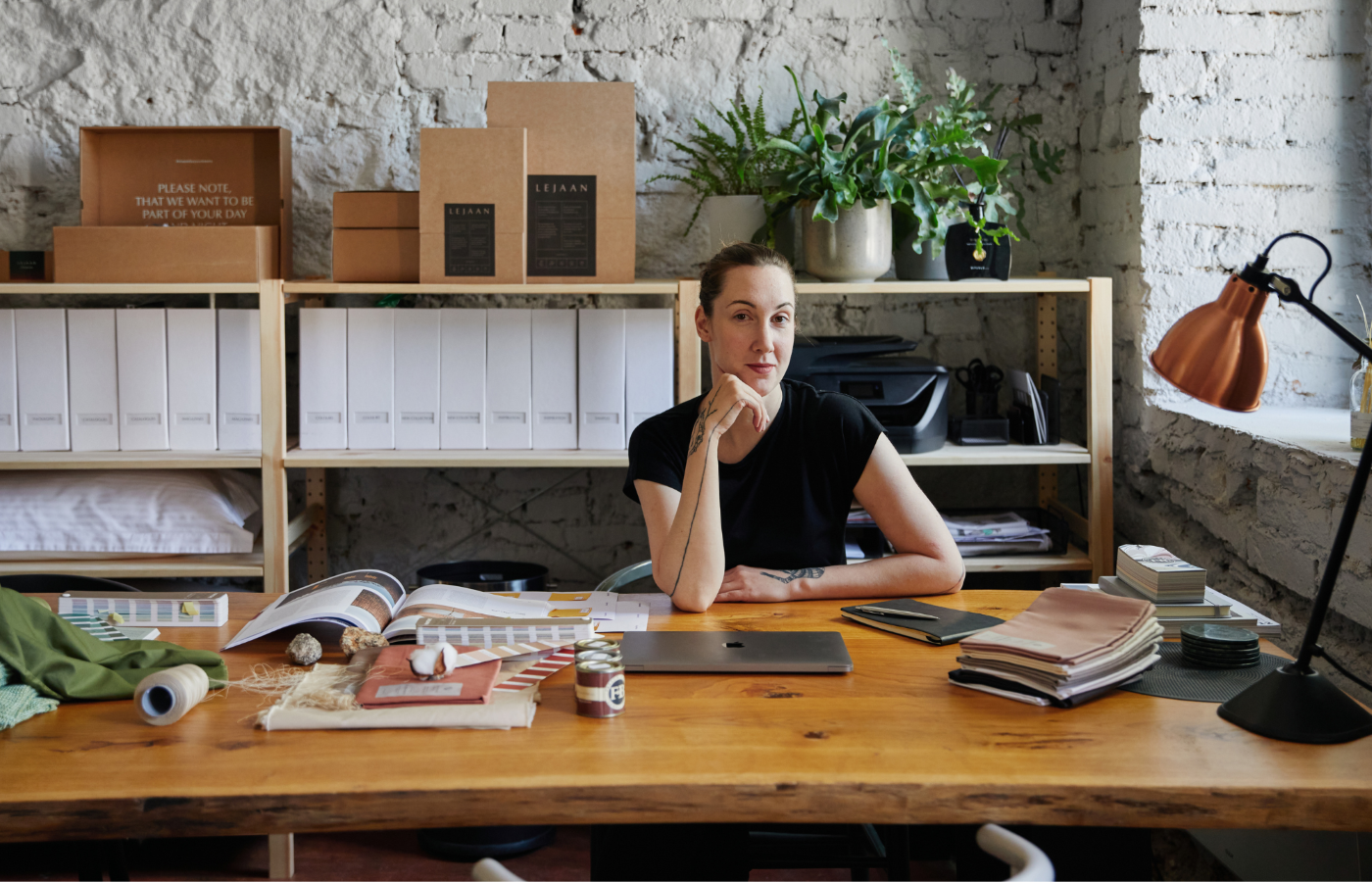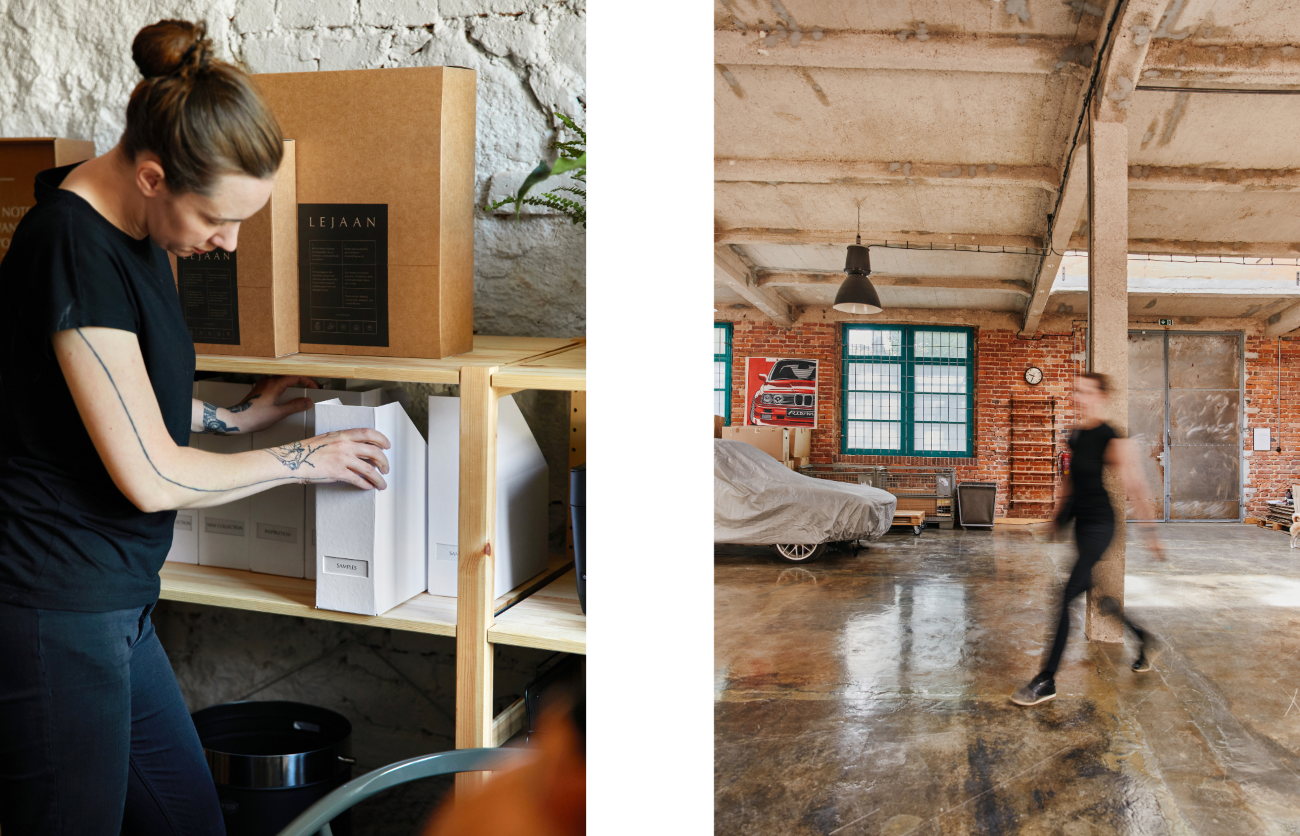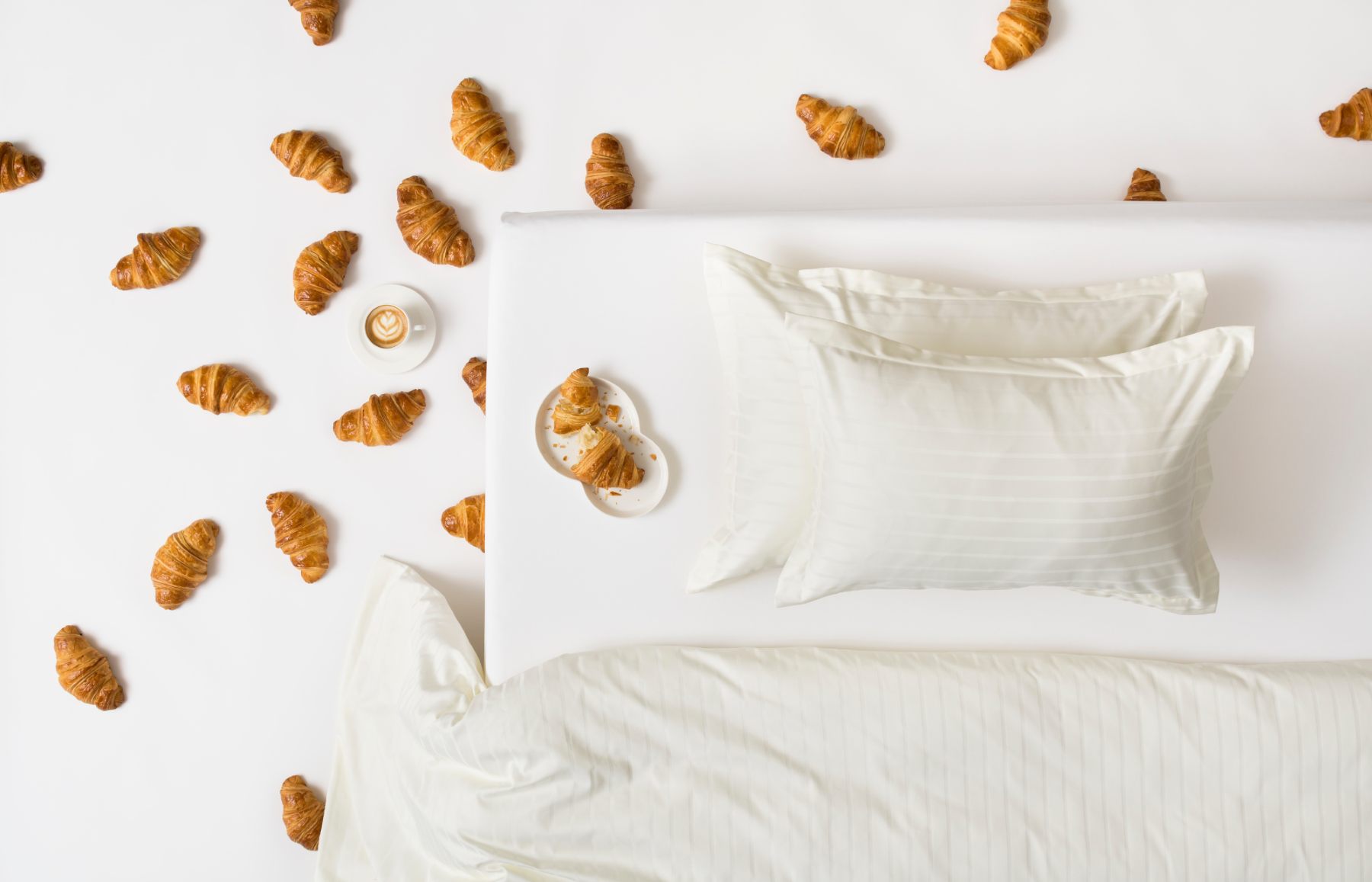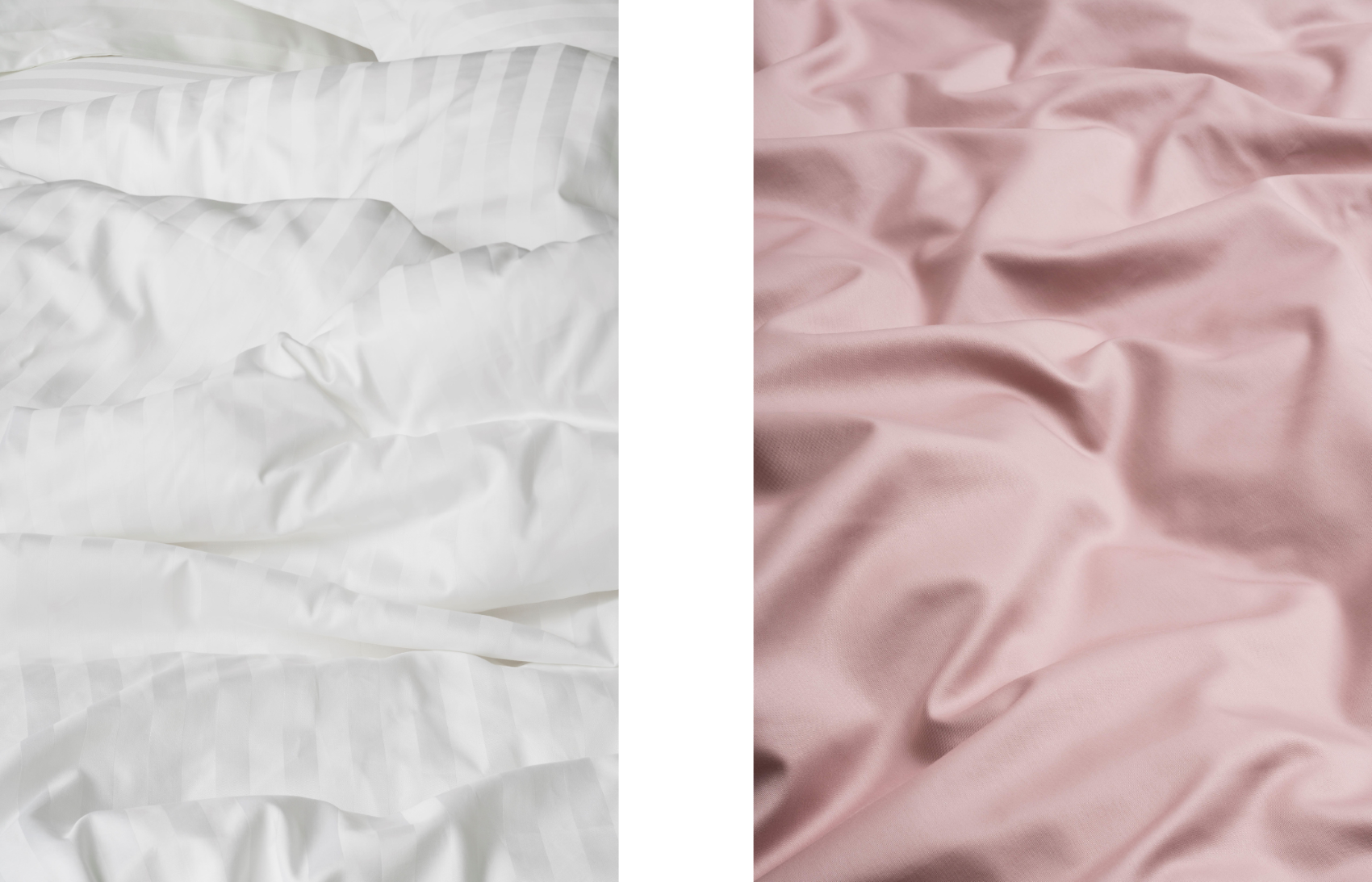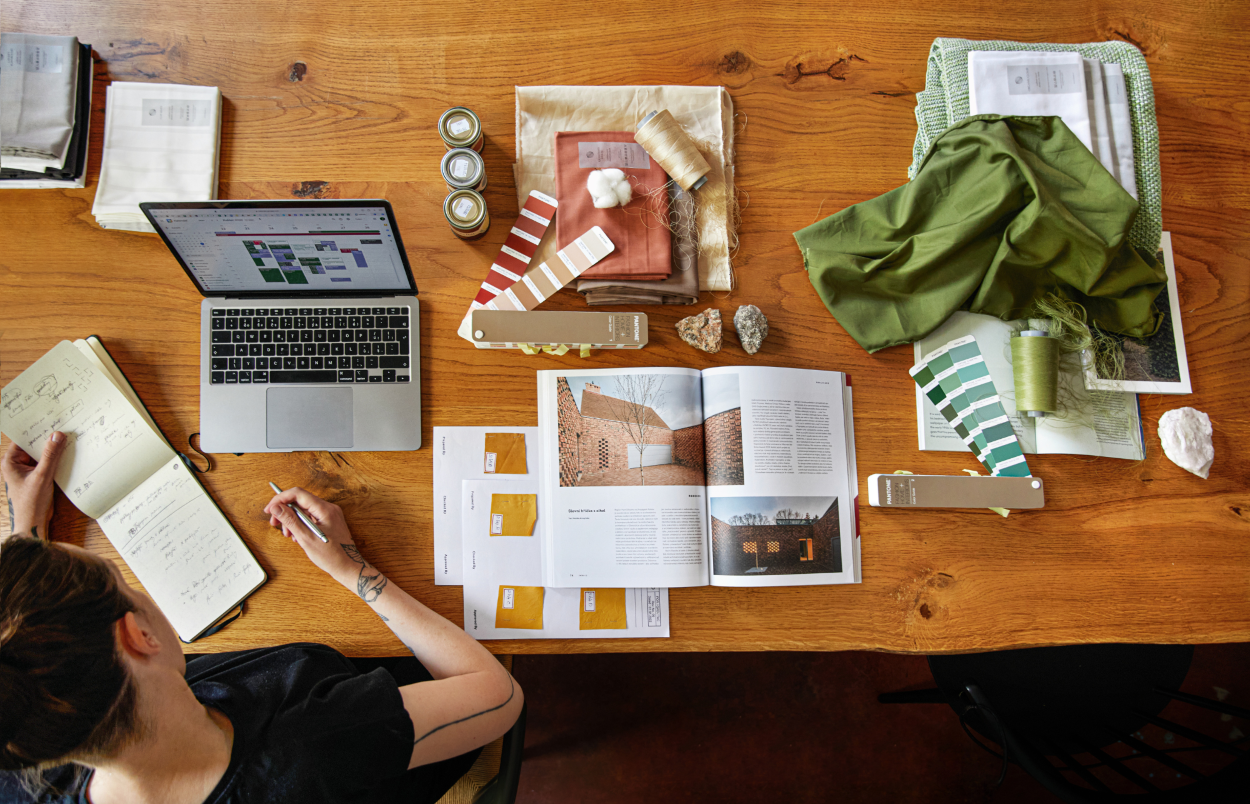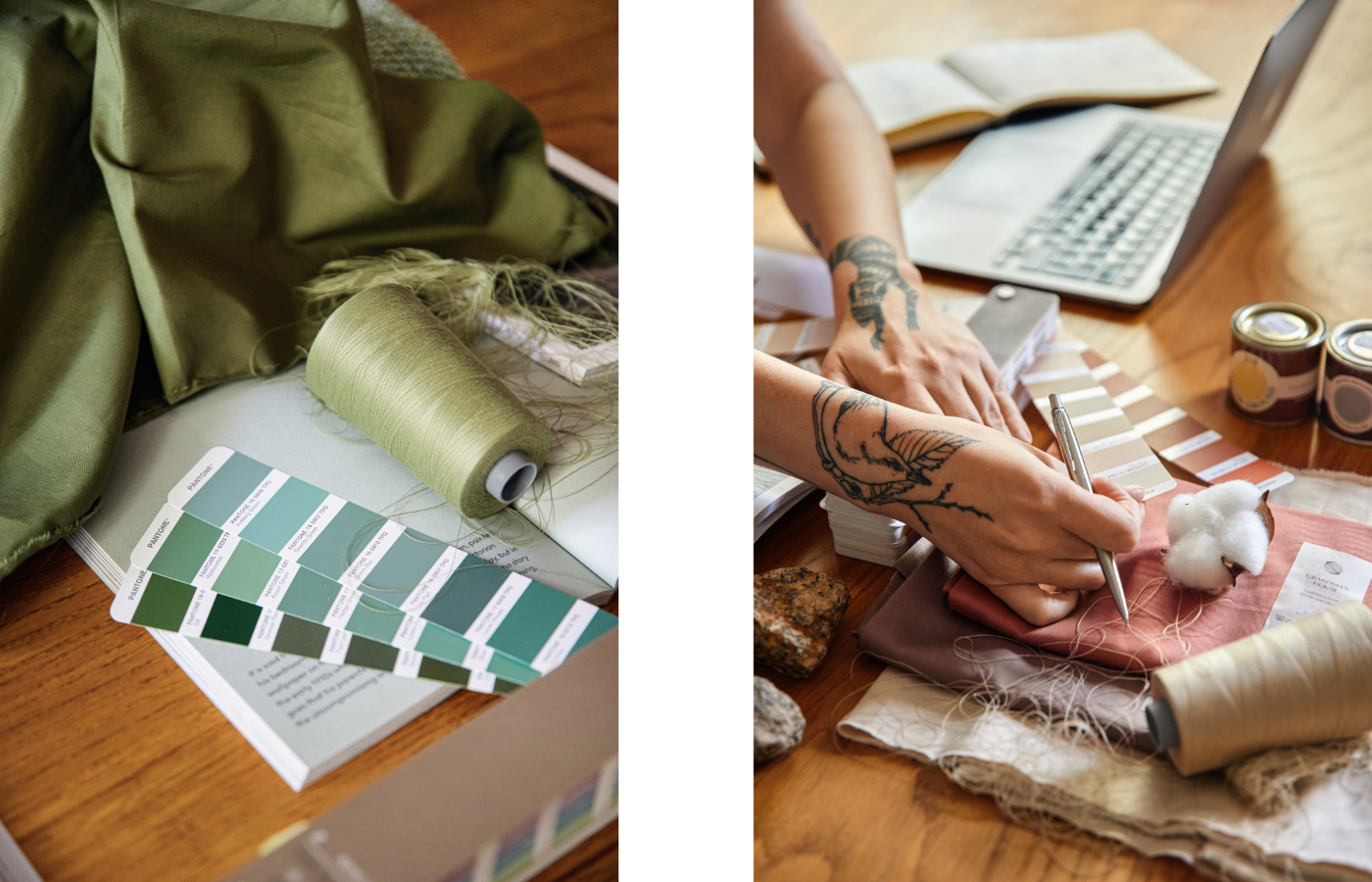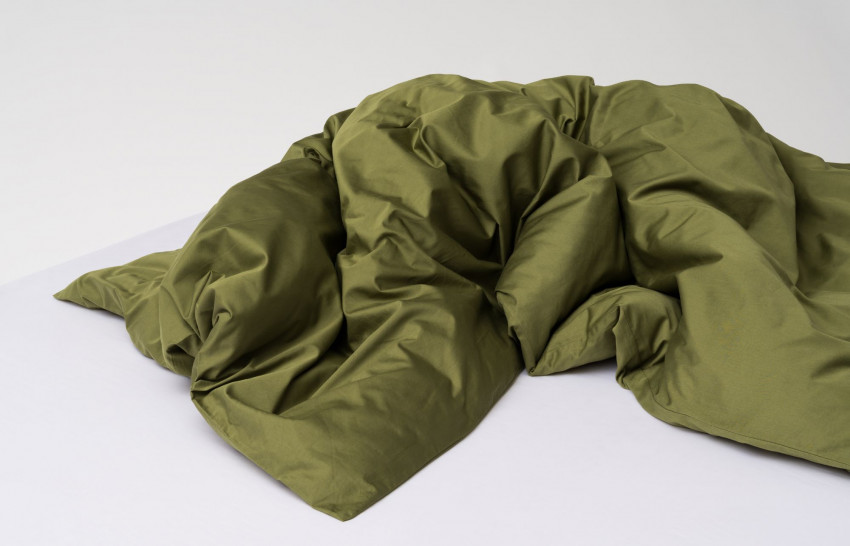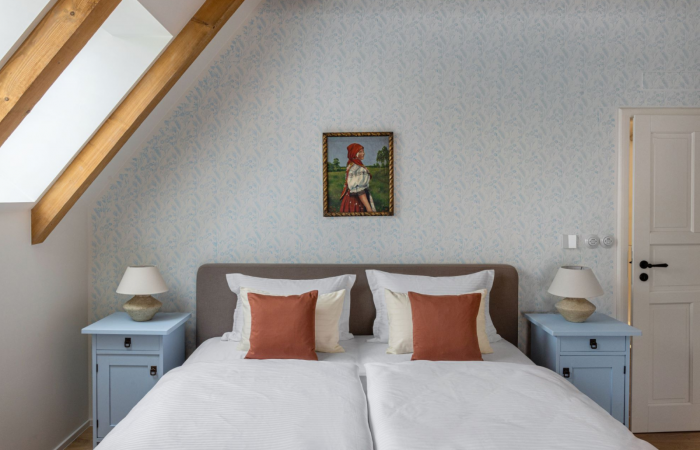The magazine LEJAAN
The Memories and Visions of Lejaan’s Creative Director
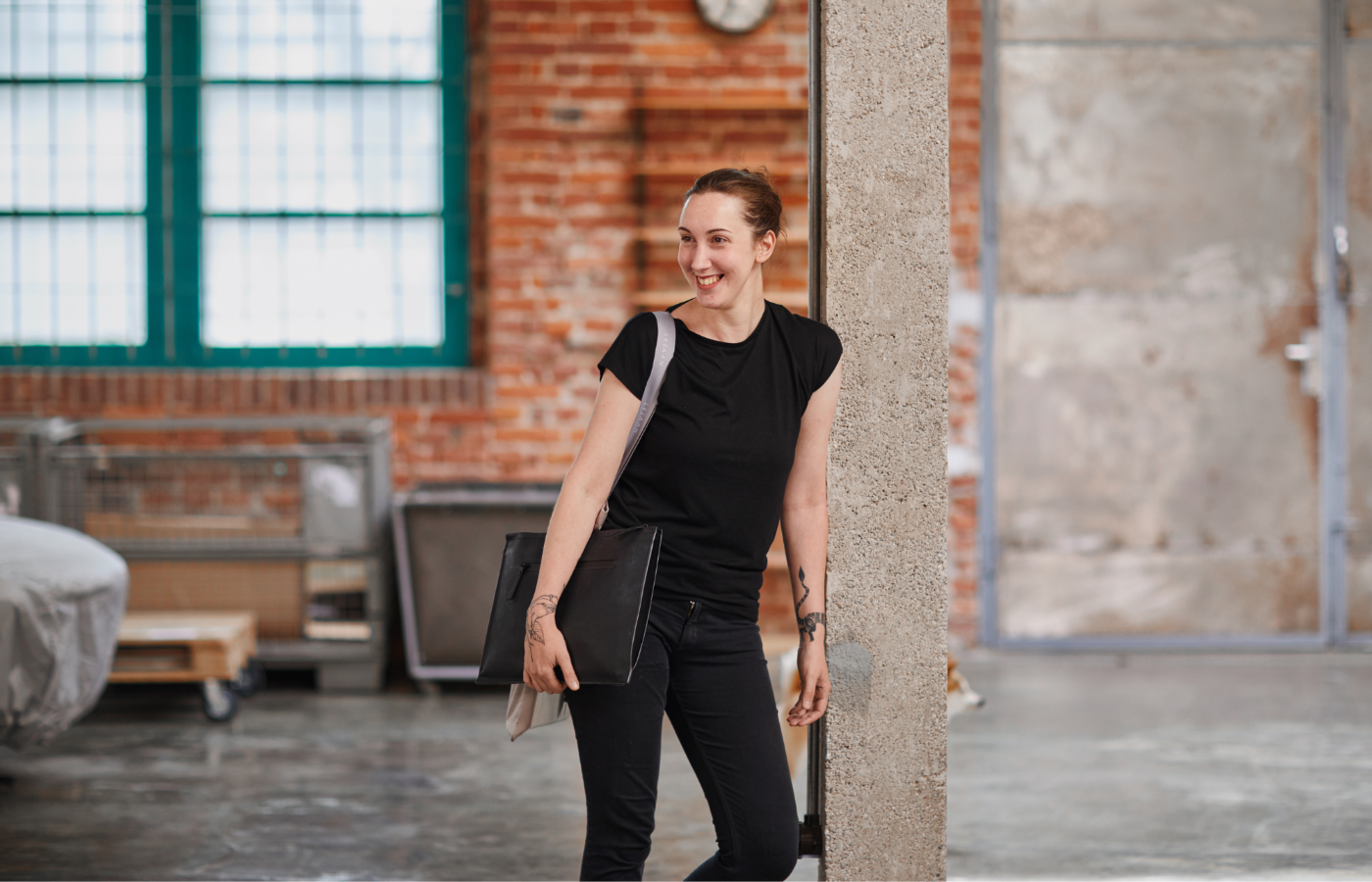
Not only was Jana Hučíková around when Lejaan took its first steps, but she also played a major part in making it into what it is today. A sustainable, minimalist, innovative, craft-respecting brand, that differentiates itself in so many aspects of the business. We at Lejaan, value Jana and her work immensely, and that’s why we want to let the world know how special she is! We chatted with her about her creative journey, Lejaan's adventurous beginnings, her biggest trials and challenges, and her plans for the future.
What did you want to be when you were little?
A vet or an interior designer. I remember the times when as kids, we’d buy my dad Smarties because he had a sweet tooth. But instead of just giving him the pack, I made him a miniature room out of a banana box (that included a table, cabinets, and a tree) and put the Smarties into it! I was already kind of drawn to interior design then. I also loved moving furniture around the room. I always addressed space in some way.
Were you encouraged to be creative?
Ironically, not at all. There were never any painters in my family, I never even went to pottery classes! I was more of a self-taught type. I had a classmate in primary school who was very good at drawing and was encouraged to do so. When I was thinking about secondary school, she inspired me and my parents took me to the Art School. There, we were told it would be a waste of time for me. But I bit the bullet and found my own way toward creativity.
When did you decide which direction you wanted to go?
In my third year at Uherské Hradiště Secondary School, where I studied fashion design, we were given the task of choosing a theatre play and designing theatre costumes for it. And at that moment I was fascinated by the idea that clothing itself could carry a story. That it doesn't necessarily have to be just a pretty dress... That's when I realized I didn't want to create regular collections. It was then that I figured stage and set design would be more my thing, a field concerning space, where it's not just about costumes, but designing the whole scene.
What experience shaped you the most in your early days?
It was quite a winding road, but most probably working as a sales assistant at Blanka Matragi. That work was a tremendous and challenging experience that taught me to focus on doing a job with precision and the importance of preparation. To this day, I use what I learned there, but probably in a completely different way than one would expect. It gave me perspective; a certain inner peace and it taught me much about communication with people in general as well as with clients. The skill of diplomatic negotiation is what I then used in my next job at Stockist.
Why did you decide to change jobs and what position did you take?
I went to Stockist after seeing the position advertised. I was still drawn to design and interior design in general. I had to learn a lot about materials and how to work them, but I really enjoyed it. I was constantly lying with my head buried in catalogues and price lists, reading everything. And it gave me so much. At first, I was a sales assistant, but as time went on, the owner started letting me have a go at decorating displays and then doing product displays, even though he was dubious at first of letting anyone move any stuff. It was a gradual process, but eventually, we built up a mutual respect, which was almost unique on his part. In the end, I was the head of the whole pavilion there.
What did the combination of these two jobs give you?
Stockist showed me the importance of the visual presentation, Blanka, on the other hand, introduced me to creative concepts and to a precise way of working. However, I also devoted a lot of my time to self-study, which brought me huge insight. And insight is what I try to have at all times. Today, I can, for example, accurately identify the brand of individual pieces simply from a photo of an interior. At one time, I even guessed brands shown in films – that’s how obsessed I was! (laughing)
After all this, how did you come across Lejaan?
A few months after my leave from Stockist, I got a call from a former colleague saying that a customer liked the table displays in the pavilion and was looking for someone to design the interior of apartments he and his architecture studio Delicode were selling. So, Marcel Gecov and I got in touch, I did the work and that was that. Then he offered a longer-term partnership and I accepted. After some time, Marcel mentioned that he and his friends had a new bed linen startup and needed someone to set up photo shoots as well as design its web and catalogues pages. They had no design concept then, just the bed linen. And that’s when it all started.
You built Lejaan from the ground up. What was the most challenging part of this process for you?
Each of us had some experience, but none of us was primarily focused on website design or marketing. We didn't know anything about SEO, PPC, banners, remarketing, etc, and tried to figure everything out on our own, which didn't really work. That was the hardest part... Once we got passed all the necessary technical stuff which took up so much time, things moved on and finally formed a structure. Before that, it was utter punk! (laughing)
What are your fondest memories at Lejaan?
Definitely the initial photo shoots and the first images, because they bring back the many funny situations that happened around them. For the Never Too Late collection, I decided I wanted rosehips in the shoot and it turned out that Marcel's parents were cutting them near their work and so Marcel's dad brought a whole carload of them.
The Winter Fields collection is also legendary. Almost 20 kg of icing sugar was used for the snow-like image! And someone quickly found a tractor wheel when I said I needed it in the photo. No one questioned why I wanted it! (laughing)
Or the Flat White collection which we shot in a studio that didn’t have a coffee maker. I needed a cup of cappuccino with latte art. So, we set up everything, the guys went to Žižkov cafés to get a number of cappuccinos and when they got back, we picked the nicest looking one, put it next to the bed, and within five minutes had to take the picture. (laughing) So, whenever we look at the images featured in a collection, we see the story that’s behind its making and it’s funny. It was lovely how everyone was so involved in the making of these images.
You are Lejaan’s Creative Director. What does this position entail?
The main part is the design of collections. It involves choosing colours, patterns and coming up with their names. A big part of it is also about designing images for each collection, their production of photo shoots, and then choosing the images. Also, anything to do with interior design, meeting up with influencers, designing the visuals of our packaging... But obviously, seeing as I’ve been around right from the start, I have a pretty good overview of the run of everything here and part of my job is project management related to the launch of new collections.
You come across as someone who gives their all to their work. What drives you forward?
I don't think I have a clear-cut answer to that. I just enjoy it! (laughing) I found myself in this job. The guys have given me freedom and confidence. No one ever watched over me. I've always come up with ideas naturally on my own. So, simply the fact that it’s fulfilling gives me energy. And also, the fact that each project moves on in the direction I wanted it to go… That's beautiful and fills me with loads of energy.
Where do you look for inspiration?
This is going to sound like a terrible cliché, but- everywhere! I think a lot of creatives have it similar. It doesn't have to be conscious, but it's often everyday situations. I often go out into the countryside and that's where I get a lot of my inspiration.
When you’re working on a new collection, what is your creative process?
We come up with the colour first, that's the sales part. For example, last year we worked a lot on the absence of warmer tones like brick and beige. We knew we wanted to incorporate these colours. That's when we pick up a swatch book, choose a shade and determine its name based on what the chosen colour evokes. And then it all sets off and I automatically start thinking about what the top view image should contain to make it understandable for everyone. Everything has to fit in and tell a story.
You moved to Liberec because of Lejaan, that's quite a change. Are you happy there?
I'm happy. I really like it here. The surroundings, the nature... Prague was too much for me. And Liberec is so specifically different.
When Lejaan started, there were just four of you, today the company has about fifteen people. Do you often think about how the company has grown?
I don't think about it often. One doesn’t really get to notice in the rush. But I recently experienced a moment, when I had to go in over the weekend to pick something up, stood in the lobby, made myself a coffee, and looked around in silence. This place started out with four shelves, a single desk, a computer, and now it's completely different. People work independently, everyone knows what to do... It's not like at the beginning when everyone kept coming to me. It's amazing how it runs now. Sometimes, I have a flash realisation of how much we’ve moved on.”
You're the one that largely defined Lejaan. Can you tell us your vision for its future?
I'm sure there are a lot of plans, big plans. We never have small ones! (laughing) I hope everyone will see Lejaan as a love brand. To make as many people as possible see how the company is developing and make them see that everyone matters. I want people to look forward to work, believe in the brand, and genuinely like it. That's more a wish than a vision. Obviously, we have a lot of ideas and plans for the future and even if only half of these were to happen, it's going to be huge! (laughing) But, for me personally, I want the people in this company to be happy and the people who purchase Lejaan to be happy and proud to say this is made by Lejaan-yes, THE Lejaan!
The last question is a bit more personal. When you look back at what you’ve made, are you proud of yourself?
Yeah, I am. I rarely admit it, but in the few years I've been with the guys, I've accomplished some really big things. So yeah, definitely! (laughing)
You Might Also Like
You have removed an item from your cart that was included in your Gift Wrap package. Please check that the contents of all your packages.
We created a separate website for customers located in Slovakia at , where you can sign in to your account. If you would like to move your account to our Czech Republic site, please contact our Customer Care via e-mail customerservice@lejaan.cz, or call +420 725 436 172 or reach out to us by live chat.
We created a separate website for customers located in the Czech Republic at , where you can sign in to your account. If you would like to move your account to our Slovakia site, please contact our Customer Care via e-mail customerservice@lejaan.cz, or call +420 725 436 172 or reach out to us by live chat.
Pro naše zákazníky v Německu jsme vytvořili samostatný web , kde se můžete přihlásit k vašemu uživatelskému účtu. Pokud si přejete účet převést pod slovenský web, kontaktujte prosím naši zákaznickou podporu na e-mailu customerservice@lejaan.cz, na telefonu +420 725 436 172 nebo prostřednictvím chatu.

